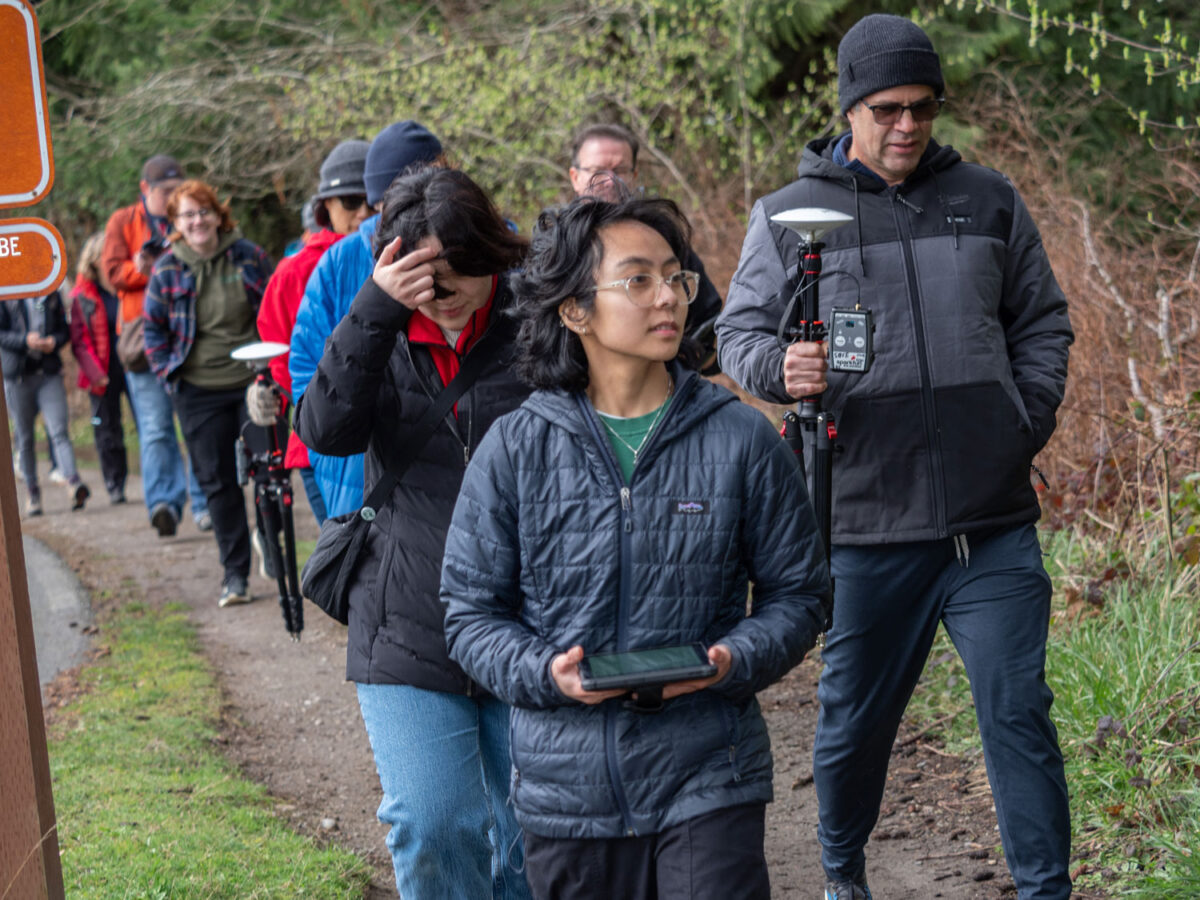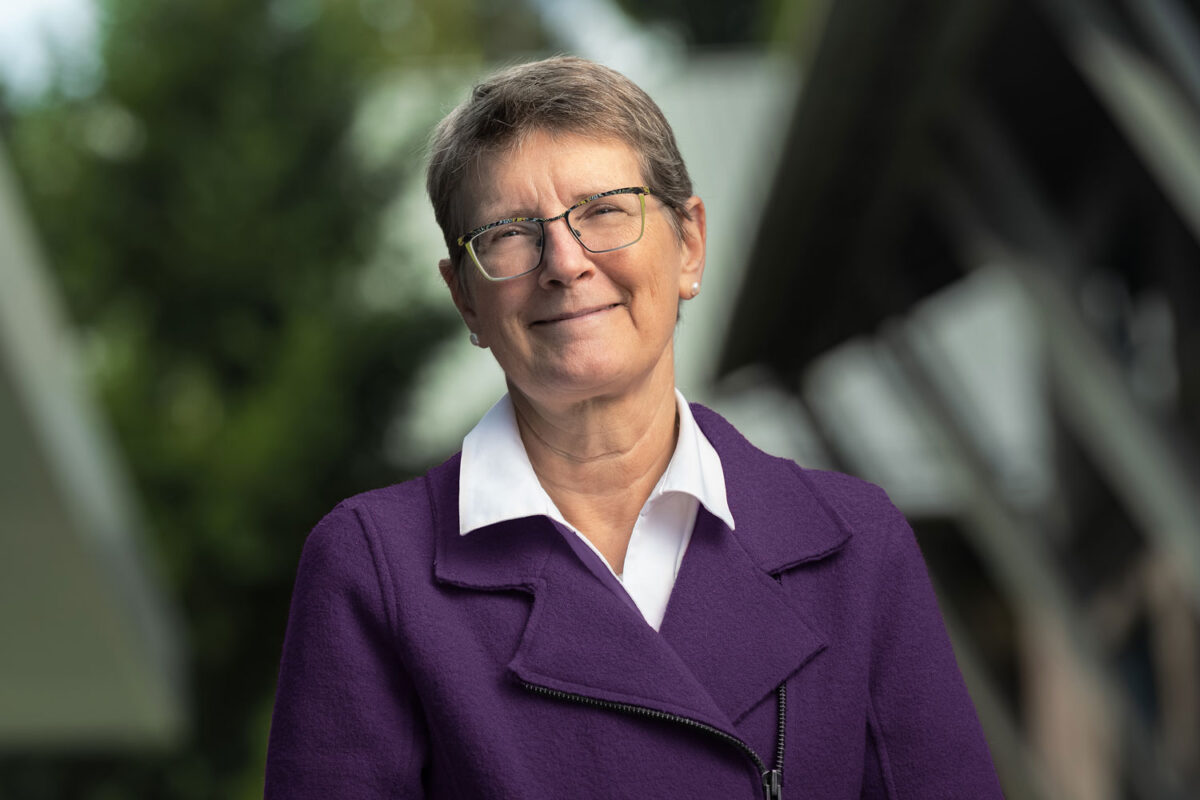
From left, Allison Clark, Holly Gummelt and Brian Gonzalez-Montoya with the robot. (Marc Studer photo)
By Douglas Esser
Mission: NASA needs a robot that can dig through volcanic ash on the surface of Mars to retrieve ice granules for water that will be necessary for humans to survive on the fourth planet from the sun. A UW Bothell robotics club thinks it has the right stuff.
Trickfire Robotics launched itself into the NASA Robotic Mining Competition against teams from 49 other colleges May 22-26 at the Kennedy Space Center at Cape Canaveral, Florida.
The 10-member UW Bothell team has been working on its robot since August, said Brian Gonzalez-Montoya, the technical director. Supporters – mostly family and friends – have donated money for supplies, expenses and travel.
This is the first big competition for the club that was formed in 2015. Gonzalez-Montoya and Dawson Brown, the manufacturing lead on the mining robot, are both original members and third-year students in mechanical engineering. The team is mentored by Assistant Professor Jong Yoon.

Photo: Dawson Brown, left, and Brian Gonzalez-Montoya, show wheels tested on model.
The NASA competition challenges teams to find innovative ways for a robot to dig in a simulated Martian environment. The robot has to navigate around boulders and craters in a silty field that would be easy to sink into, especially when gravity is less than half Earth’s. The robot has to excavate 10 kilograms (22 pounds) and deliver it to a collection bin in 10 minutes. It has to be energy efficient, fit everything within size limits and weigh no more than 80 kilograms (176 pounds).
This is NASA’s eighth annual robotic mining competition. Ranked on points, teams compete for several awards and trophies in different categories with a grand prize of $5,000 for overall excellence. UW Bothell is the only university in Washington in this competition.
NASA missions to Mars, such as the rover named Curiosity, have found water in the form of ice and granular materials. It will have to be mined for humans to live, grow plants or manufacture fuel for the trip home.
The Red Planet is typically described as inhospitable, and NASA takes that to the robo-pit. Take the soft soil. The surface for the simulated dig site is basalt powder so fine that the particles are a health hazard, said Gonzalez-Montoya. That means the students near the robot have to wear hazmat suits.

Photo: Team member Holly Gummelt works on robot chassis.
The people actually operating the robot are elsewhere, controlling it remotely, with a time delay on the transmissions. Their mission is to find a path across the silty surface, dig down about a foot through to powder to recover gravel, which simulates ice.
“It’s very difficult to know if something is the right option,” said Gonzalez-Montoya.
The robotics team tested wheel design on a scaled-down robot in the finest powder it could easily find – flour. They printed out 26 wheels on the 3-D Makerspace printers to test traction. They also built three prototypes for digging through the powder and gravel.
Many teams in past years of this NASA competition have just scooped the surface. The UW Bothell team wants to dig deeper – into the gravel, said Brown.
The team also has completed other NASA requirements for the contest, including turning in a technical paper and participating in outreach such as the Inspire STEM festival and visiting schools with Lego robots to build interest in science, technology, engineering and math.
Trickfire Robotics is intimately familiar with every part and system of its robot. But for months they just called it “the robot,” said Gonzalez-Montoya. A name dawned on them after they had worked all night to meet a deadline, and it took its first "steps" as the sun was rising. They named it Daybreak.
Trickfire Robotics:

From left, Holly Gummelt, Fedor Polyanskiy, Samuel Ionesi, Assistant Professor Jong Yoon, Anand Sekar, Adham Baioumy, Allison Clark, Brian Gonzalez-Montoya, Dawson Brown, Adam Krpan, and Michael Meier. Not pictured, Benoney Puga. (Courtesy photo)



